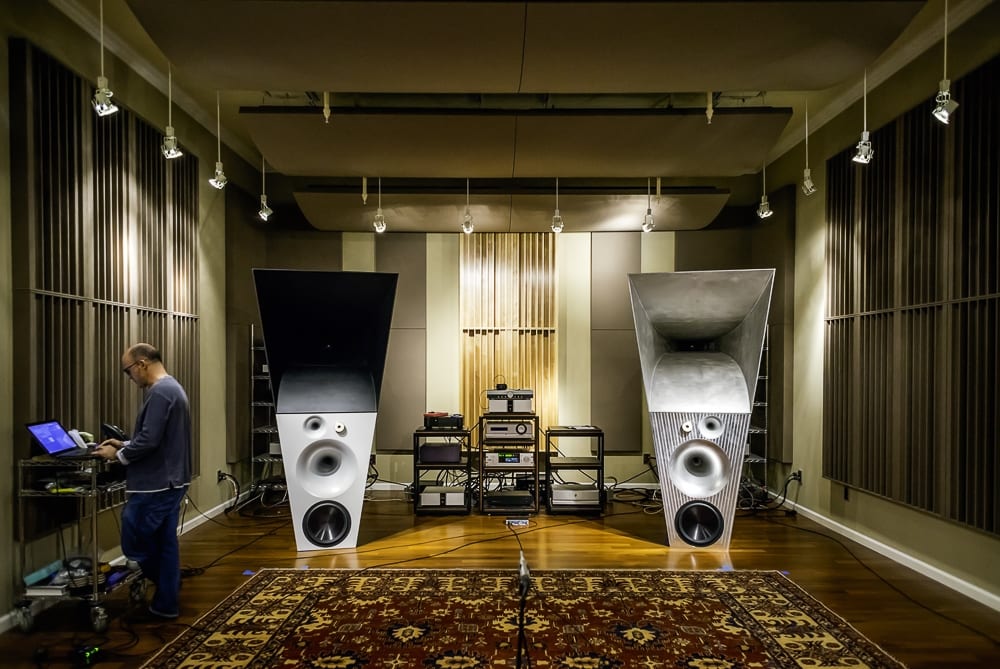
The History and Impact of Horn-Loaded Speakers
In the world of professional loudspeaker sound systems, horn-loaded speakers hold a significant place in history, marking a period of innovation and change in the way sound is delivered and experienced. The story of horn-loaded speakers is not just about technological advancement; it’s about how these speakers have transformed public gatherings, concerts, and performances, enhancing the way we engage with sound.
The journey of horn-loaded speakers began in the early 20th century, a time when the quest for louder and clearer sound was paramount, especially in large public spaces. This need led to the invention of the horn speaker, a device that efficiently couples the power from a driver into the air, significantly increasing the loudspeaker’s efficiency and its ability to project sound over a greater distance.
Initially, horn-loaded speakers were predominantly used in movie theaters, public address systems, and early radio. Their ability to produce clear sound over large areas made them indispensable in these early applications. The design of these speakers involved a driver attached to a horn, which acted as an acoustic transformer, amplifying the sound produced by the driver and projecting it further and more clearly than previously possible.
As technology advanced, so did the design and application of horn-loaded speakers. The 1940s and 1950s saw a surge in their popularity in professional loudspeaker sound systems, particularly for live music performances. They were prized for their efficiency and their ability to deliver sound with minimal distortion, even at high volumes. This was a game-changer for live events, where clear and powerful sound was essential for audience enjoyment.
One of the most significant impacts of horn-loaded speakers was in the realm of rock and roll and large-scale music festivals. These speakers were instrumental in the success of outdoor concerts, where their ability to project sound over large distances without losing quality was critical. They became a staple in these settings, enabling artists to connect with larger audiences than ever before.
The evolution of horn-loaded speakers continued through the late 20th century and into the 21st century, with improvements in materials and design. Modern horn-loaded speakers are more compact, efficient, and versatile than their predecessors, making them suitable for a wide range of applications. Today, they are used not only in large-scale concerts but also in theaters, clubs, and even high-end home audio systems.
Despite advancements in other types of speaker technology, the horn-loaded speaker remains a revered component in professional audio setups. Its unique ability to direct and focus sound makes it an invaluable tool in the arsenal of sound engineers and audio professionals. The clarity and efficiency it provides, especially in challenging acoustic environments, continue to make it a preferred choice in many professional settings.
The history of horn-loaded speakers is not just a narrative of technological progress; it’s a story of how innovation in audio technology can enhance our collective experiences. From the early days of cinema and radio to the rock concerts of the 60s and beyond, these speakers have played a pivotal role in shaping our auditory landscape. They have allowed us to experience sound in its fullness and richness, bringing us closer to the music and voices we love.
As we look to the future, the legacy of horn-loaded speakers continues to influence the development of new audio technologies. While the designs and applications may evolve, the principle of delivering clear, powerful sound remains constant. This enduring legacy is a testament to the ingenuity and innovation that drives the field of professional loudspeaker sound systems. Horn-loaded speakers, in their various forms, continue to be a symbol of our never-ending quest for perfect sound, a quest that has, and will continue to, enrich our lives in countless ways.
